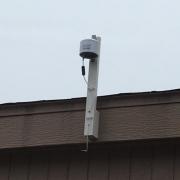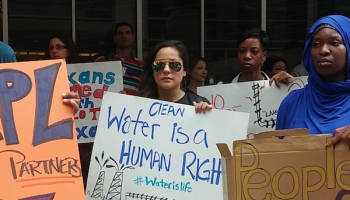Community and school-based science in action
Michigan is in the top five states for diseases linked to air quality, racking up $1.5 billion per year in excess health care costs. Cities like Detroit, which has numerous industrial pollution sources in addition to a large transportation sector, suffer the worst impacts of these diseases. Adults in Detroit are hospitalized for asthma 3.7 times as often as adults in the rest of the state. According to the University of Michigan, outdoor air pollution in Detroit causes 721 premature deaths, half a million missed work days, and a million missed school days each year. In 2019, the Ecology Center led the Breathe Free Detroit campaign, which succeeded in shutting down the Detroit garbage incinerator. Pollution in Detroit has many sources, and together with our community partners we have continued to fight for cleaner air by deploying a network of air monitors that track pollution hot spots and use the data to create better air quality policies. Our goal is to replicate our successes in Detroit in other cities across Michigan and the Great Lakes states.
In 2019, the Ecology Center's Environmental Education and HealthyStuff programs launched a community-based science program to monitor air quality with low-cost air monitors. The program works with schools and community partners to install and generate local air quality data which is used to educate students and community members.
The program currently uses three types of air monitors: twenty PurpleAir particulate matter (PM) monitors; three Aeroqual Micro Air Quality Monitors; and one Series 500 - Portable Multi-pollutant Air Quality Monitor.
About our monitoring network

Our current school partners in Detroit include the Grace Lee Boggs School, 4141 Mitchell St., Detroit; University Prep Academy High School, 610 Antoinette St, Detroit, and the Clippert Multicultural Magnet Honors Academy, 1981 McKinstry St, Detroit. Each school is conducted pilot programs with students in April and May of 2019. The schools all have both an indoor and outdoor monitors. This allows students to analyze differences between indoor and outdoor PM levels.
Other monitors have been installed outside homes and businesses in areas near the schools to provide a broader assessment if the local air quality for students to analyze.
Detroit Area Monitors
Washtenaw County Monitors


